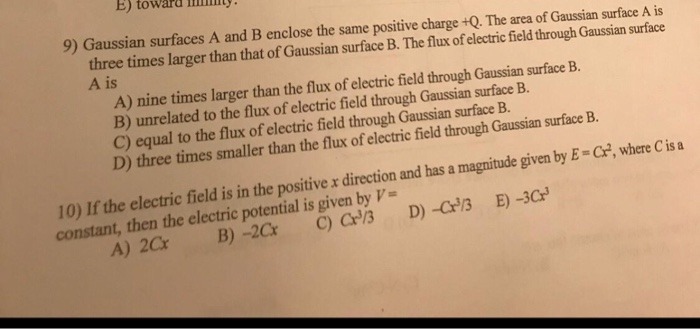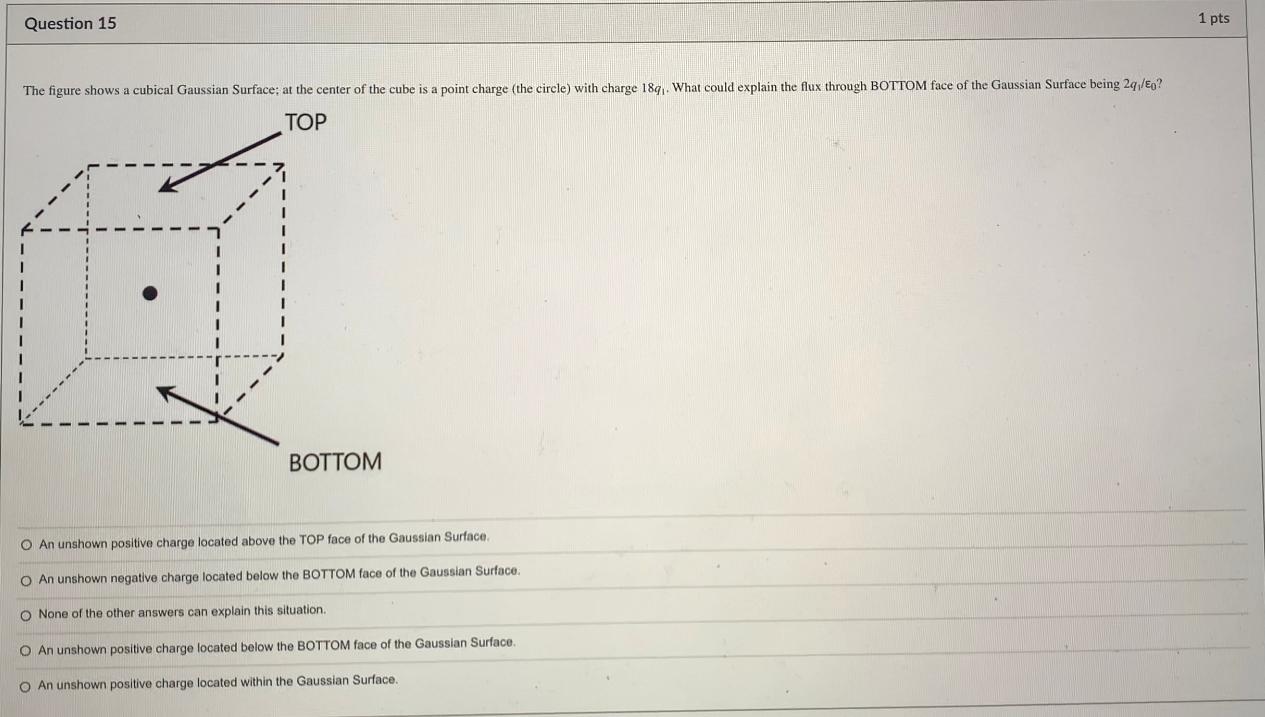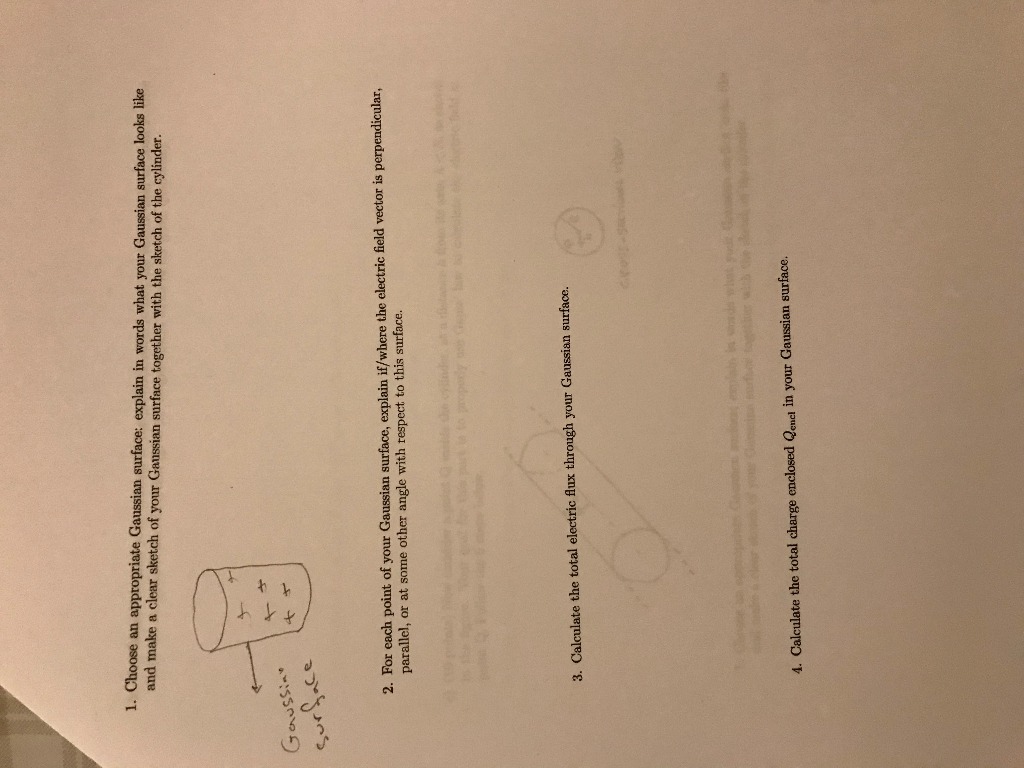Answers needed
E) toward fifty 9) Gaussian surfaces A and B enclose the same positive charge +Q. The area of Gaussian surface A is three times larger than that of Gaussian surface B. The flux of electric field through Gaussian surface A is A) nine times larger than the flux of electric field through Gaussian surface B. B) unrelated to the flux of electric field through Gaussian surface B. C) equal to the flux of electric field through Gaussian surface B. D) three times smaller than the flux of electric field through Gaussian surface B. 10) If the electric field is in the positive x direction and has a magnitude given by E = Cx', where C is a constant, then the electric potential is given by V= A) 2Cx B) -2Cx C ) CP3 /3 D) -Cx/3 E) -30Question 15 1 pts The figure shows a cubical Gaussian Surface; at the center of the cube is a point charge (the circle) with charge 189. What could explain the flux through BOTTOM face of the Gaussian Surface being 2q,/Eg? TOP BOTTOM An unshown positive charge located above the TOP face of the Gaussian Surface. An unshown negative charge located below the BOTTOM face of the Gaussian Surface. None of the other answers can explain this situation. An unshown positive charge located below the BOTTOM face of the Gaussian Surface. O An unshown positive charge located within the Gaussian Surface.24) Gaussian surfaces A and Benclose the same positive charge . Q. The area of Gaussian surface A is three times larger than that of Gaussian surface B. The flus of electric field through Gaussian surface A is A) three times larger than the flux of electric field through Gaussian surface B. B) equal to the flux of electric field through Gaussian surface B. C) nine times larger than the flux of electric field through Gaussian surface B. D) unrelated to the flux of electric field through Gaussian surface B. E) three times smaller than the flux of electric field through Gaussian surface B.1. Choose an appropriate Gaussian surface: explain in words what your Gaussian surface looks like and make a clear sketch of your Gaussian surface together with the sketch of the cylinder. Gaussing surface 2. For each point of your Gaussian surface, explain if/where the electric field vector is perpendicular, parallel, or at some other angle with respect to this surface. 3. Calculate the total electric flux through your Gaussian surface. 4. Calculate the total charge enclosed Qenel in your Gaussian surface










